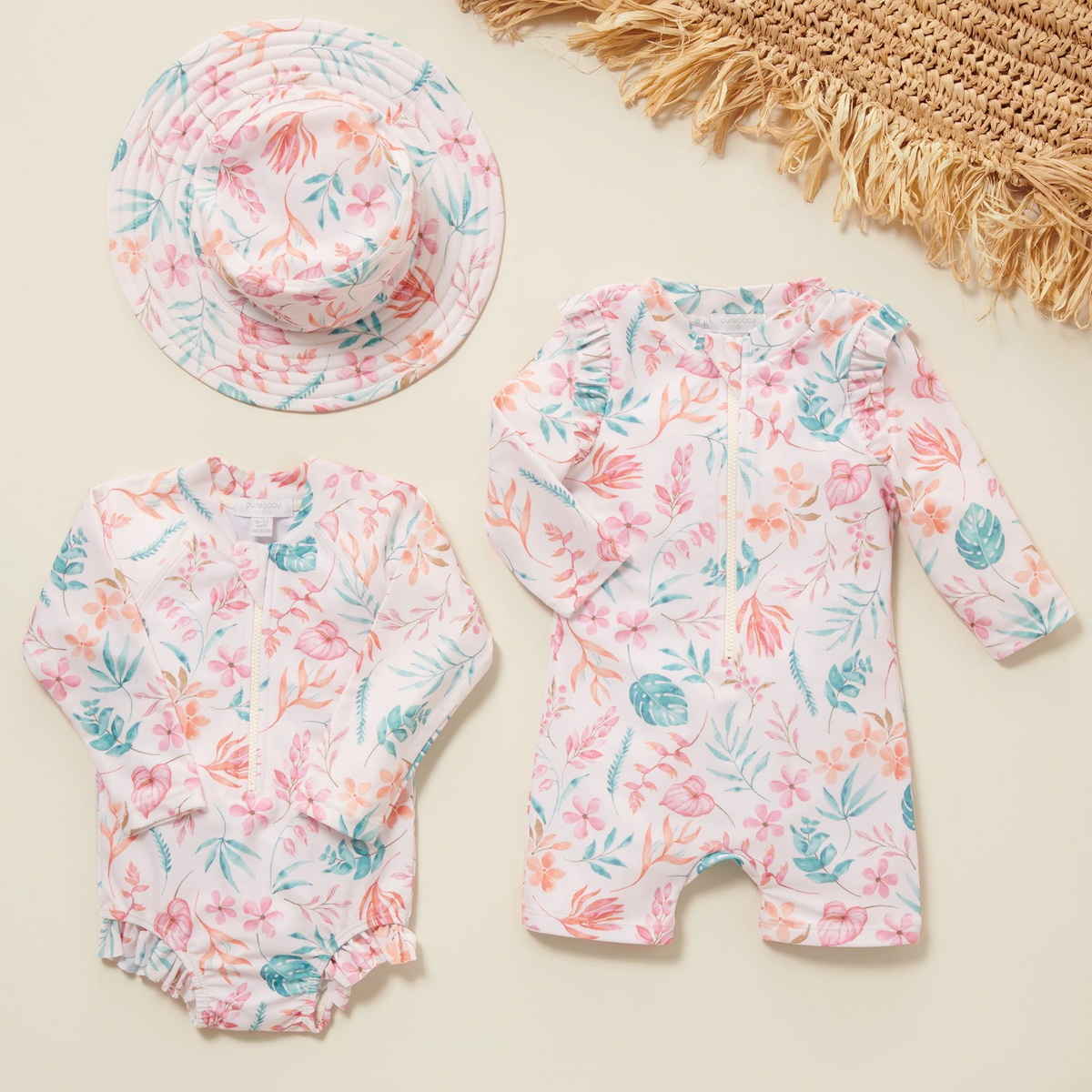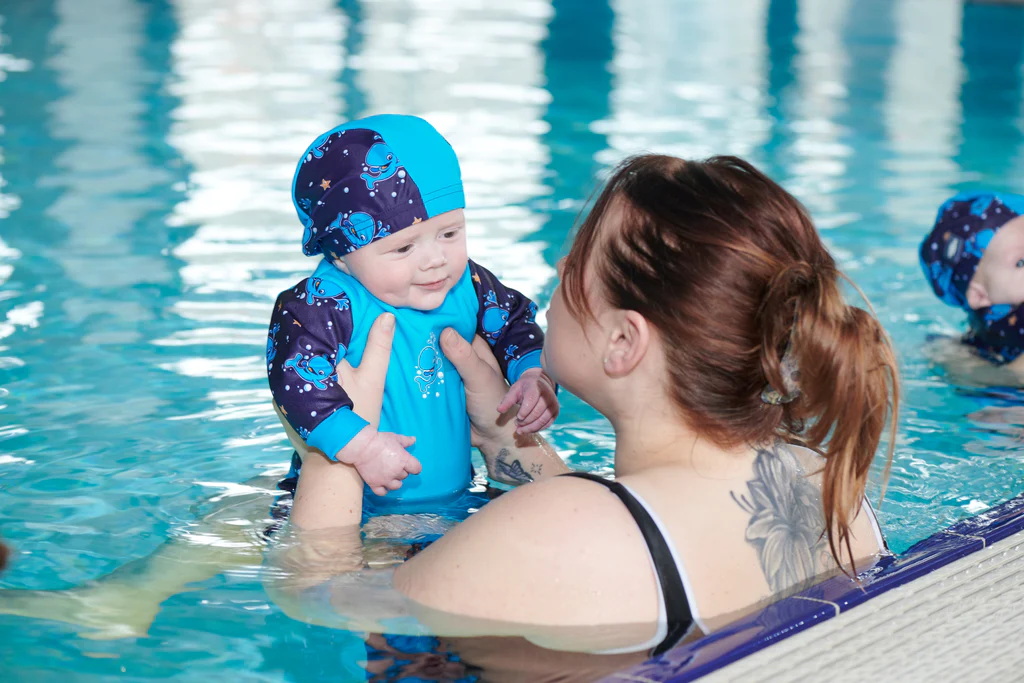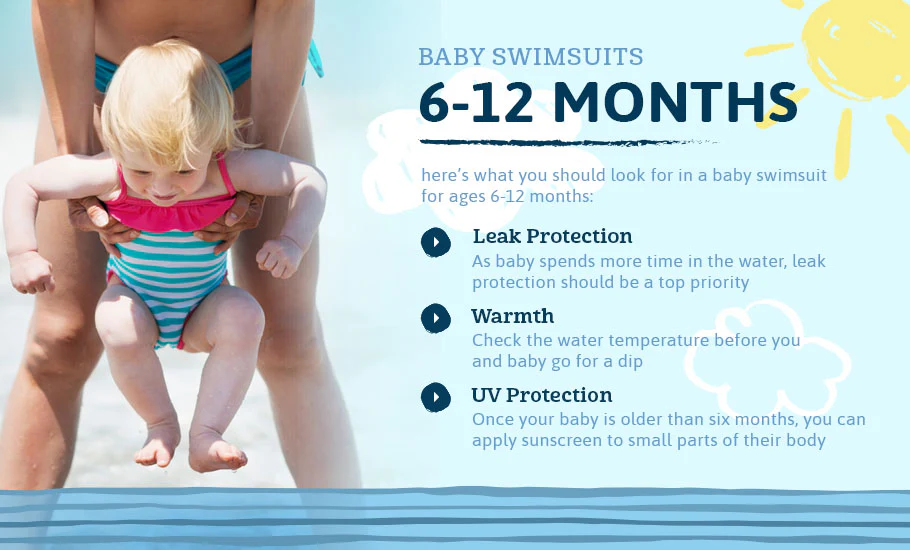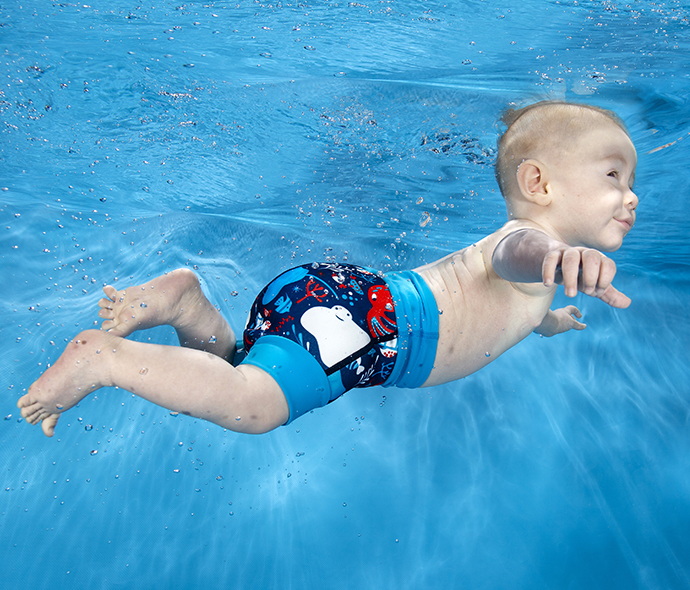Content Menu
● Understanding Baby Swimwear Essentials
● Essential Swimwear Items
>> 1. Swim Diapers
>> 2. Rash Guards
>> 3. Swimsuits or Wetsuits
>> 4. Sun Hats
>> 5. Water Shoes
>> 6. Life Jackets
● Additional Swimming Accessories
● Tips for Taking Your Baby Swimming
● Common Questions About Baby Swimwear
>> 1. Can I use regular diapers while swimming?
>> 2. What age can my baby start swimming?
>> 3. How do I choose the right size swimwear?
>> 4. Is sunscreen necessary even if my baby is wearing a rash guard?
>> 5. How often should I change my baby's swim diaper?
● Conclusion
● Citations:
Taking your baby swimming can be a delightful experience, but it also requires careful consideration of their swimwear. Choosing the right swimwear not only ensures comfort but also safety and protection from the elements. This guide will explore the essential swimwear items for babies, helping you prepare for a fun and safe day at the pool or beach.

Understanding Baby Swimwear Essentials
When selecting swimwear for your baby, there are several key factors to consider:
- Age and Size: Babies grow quickly, and swimwear should fit snugly to prevent any accidents in the water.
- Material: Look for lightweight, breathable fabrics that dry quickly. Neoprene is an excellent choice for cooler waters as it provides insulation.
- Sun Protection: Babies have sensitive skin, making UV protection crucial. Opt for swimwear with UPF (Ultraviolet Protection Factor) ratings.
- Comfort: Soft fabrics and designs that allow for movement are essential to keep your baby comfortable while swimming.

Essential Swimwear Items
Here's a breakdown of the must-have swimwear items for babies:
1. Swim Diapers
Swim diapers are essential for babies who are not potty trained. They come in two types: disposable and reusable.
- Disposable Swim Diapers: Designed to be worn once, they do not swell in water and help contain solid waste.
- Reusable Swim Diapers: Made from tightly woven fabric, these can be washed and reused, making them eco-friendly options.
Both types prevent leaks and allow for freedom of movement in the water[1][2].
2. Rash Guards
Rash guards provide an extra layer of protection against sun exposure and potential scrapes from rough surfaces. They are typically made from lightweight, stretchy materials that dry quickly. Long-sleeved rash guards are particularly beneficial as they cover more skin[3][8].
3. Swimsuits or Wetsuits
Choosing between a swimsuit or wetsuit depends on the swimming environment:
- Swimsuits: For warm pools or beaches, a one-piece swimsuit offers good coverage and is easy to put on and take off.
- Wetsuits: For cooler waters, a neoprene wetsuit helps keep babies warm by trapping a layer of water close to their skin[2][8].
4. Sun Hats
A broad-brimmed hat made from UPF material provides additional sun protection for your baby's face and neck. This is especially important during outdoor swimming sessions[8].
5. Water Shoes
Water shoes protect delicate feet from hot sand or sharp rocks while providing grip on slippery surfaces. Look for soft, flexible materials that are comfortable for your baby to wear[3].
6. Life Jackets
For babies who are new to swimming or may need extra support, life jackets designed specifically for infants can help keep them afloat safely. Ensure that any flotation device used meets safety standards[3].

Additional Swimming Accessories
In addition to swimwear, consider packing these essentials for your baby's swimming outing:
- Towels: Bring soft towels or hooded towels to wrap your baby after swimming.
- Sunscreen: Use waterproof sunscreen free from harsh chemicals to protect your baby's sensitive skin from UV rays.
- Snacks and Drinks: After swimming, babies can get hungry quickly, so pack some healthy snacks and drinks[7].
Tips for Taking Your Baby Swimming
1. Choose the Right Time: Avoid peak sun hours (10 AM - 4 PM) when planning outdoor swims.
2. Stay Close: Always keep your baby within arm's reach in the water.
3. Start Slow: If it's your baby's first time swimming, allow them to acclimate gradually to the water temperature.
4. Monitor Temperature: Ensure that the pool or beach water is warm enough for your baby; ideally, it should be around 85°F (29°C) or warmer[1].
5. Hydration is Key: Keep your baby hydrated before and after swimming, especially in hot weather.

Common Questions About Baby Swimwear
Here are some frequently asked questions regarding baby swimwear:
1. Can I use regular diapers while swimming?
No, regular diapers should not be used in water as they swell up and do not contain leaks effectively. Always use swim diapers instead[1][3].
2. What age can my baby start swimming?
Babies can start swimming as early as six months old, but it's important to ensure they are comfortable in the water and supervised at all times[3].
3. How do I choose the right size swimwear?
Swimwear should fit snugly but not restrict movement. Check size charts provided by manufacturers and consider that babies grow quickly; it may be wise to buy slightly larger sizes if you plan on using them over multiple seasons[8].
4. Is sunscreen necessary even if my baby is wearing a rash guard?
Yes, while rash guards provide some sun protection, it's still important to apply sunscreen on exposed areas of skin to prevent sunburn[3][8].
5. How often should I change my baby's swim diaper?
Change your baby's swim diaper immediately after swimming sessions or if you notice any leaks to maintain hygiene and comfort[2][8].

Conclusion
Choosing the right swimwear for your baby is crucial for their comfort and safety while enjoying time in the water. By selecting appropriate items like swim diapers, rash guards, wetsuits, and sun hats, you can create a safe and enjoyable swimming experience for your little one.
With proper preparation and awareness of safety measures, you'll be well-equipped to introduce your baby to the joys of swimming!
Citations:
[1] https://www.motherandbaby.com/reviews/first-year-products/what-should-babies-wear-swimming/
[2] https://us.splashabout.com/helpcentre/where-start-size-help/baby-swimwear-essentials
[3] https://www.bearpaddle.com/swimming-blog/taking-your-baby-swimming-what-to-wear/
[4] https://stock.adobe.com/search?k=baby+swimsuit
[5] https://www.youtube.com/watch?v=46lKP5MB5vo
[6] https://www.youtube.com/@baby_swim
[7] https://www.huggies.co.uk/parenting-advice/playtime-activities/baby-swimming/baby-swim-bag-essentials
[8] https://purebaby.com.au/blogs/journal/how-to-choose-swimwear-for-baby
[9] https://www.gettyimages.co.jp/%E5%86%99%E7%9C%9F/baby-swimwear






































